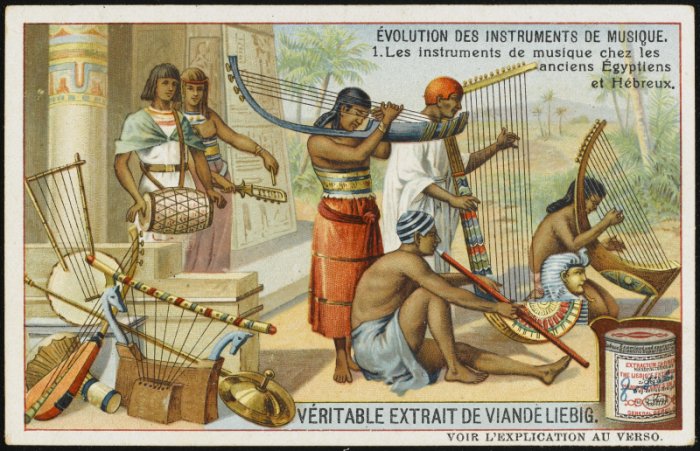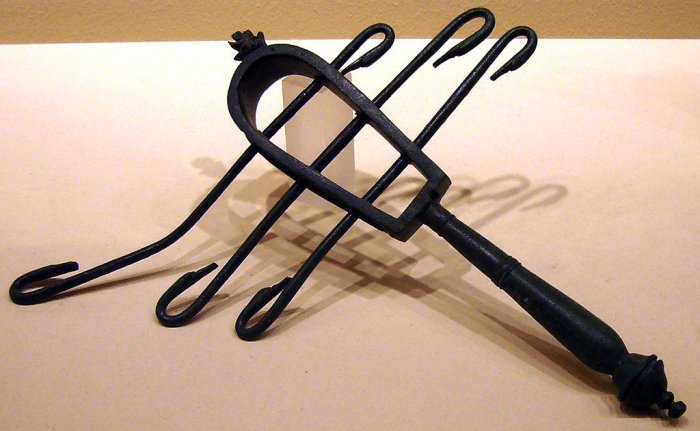How Important Was Music In Ancient Egypt?
Conny Waters - AncientPages.com - The appreciation for music is universal and timeless. Findings show the importance of music was widespread in the Upper Paleolithic period (ca. 50,000-10,000 BC).
When it comes to more advanced civilizations, we find traces of some of the world’s oldest musical instruments in Egypt. Many ancient Egyptian wall paintings and carvings depict people singing and dancing. It goes without saying that must have played a role in such entertaining activities.
Credit: Archivist - Adobe Stock
While examining tomb paintings dating back to around 2575 B.C. to 2134 B.C., a period known as the Old Kingdom in Egyptian history, scientists discovered people liked to play flutes, clarinet-like reed instruments that had both single and double pipes, lutes, and harps.
One of the most famous and sacred ancient Egyptian instruments was the sistrum, an object associated with Hathor, a goddess who personified the principles of joy, feminine love, and motherhood. The object was made from clay, wood, or metal, and the instrument provided rhythmical accompaniment to other instruments, particularly in religious rites and festivals.
A sekhem-style sistrum. Credit: Lalupa -CC BY-SA 3.0
In the tomb of the Eighteenth Dynasty, Pharaoh Tutankhamun archaeologists discovered two trumpets and various percussion instruments. The trumpets, one of sterling silver and one of bronze or copper, are considered to be the oldest operational trumpets in the world and the only known surviving examples from ancient Egypt.
Studies of Egyptian art reveal musicians were nearly always men in the Old Kingdom. By the time of the New Kingdom, they were mostly women.
Ancient Egyptians also believed music could help a person on his or her journey to the afterlife.
“In Old and Middle Kingdom tombs, inscriptions of songs and hymns were sung to the accompaniment of a harp to celebrate the dead.” 1
Music was part of ancient Egyptians’ daily life, but special occasions sometimes required more elaborate performances.
“Festivals and holy days were marked by music and singing. Groups of musicians would sometimes have to entertain thousands of people. Such festivals were frequent. One village in the Fayum region dedicated 150 days every year to feasting in the name of the gods.
A wide variety of percussion instruments were played. Rhythms were beaten out on tambourines, ivory clappers, drums, castanets, cymbals and an array of chiming bells. Stringed instruments included the lyre (a form of lute) and the harp. These resemble versions that were introduced from Asia. Wind instruments included wooden pipes (similar to modern Egyptian folk clarinets) and early flutes, which were made from reeds and later, bronze. Bugle-like trumpets were used in religious ceremonies and in battle.” 1
See also: More Ancient History Facts
Music was not restricted to gender in ancient Egypt; men could play some instruments, and women could only play some.
We may never know what ancient Egyptian music sounded like. Still, there is no doubt several musical instruments have their roots in Pharaonic times, and listening to various sounds was as popular back then as it is today.
Updated on November 27, 2023
Written by Conny Waters – AncientPages.com Staff Writer
Copyright © AncientPages.com All rights reserved. This material may not be published, broadcast, rewritten or redistributed in whole or part without the express written permission of AncientPages.com
Expand for referencesMore From Ancient Pages
-
 Rollo: Viking Sea Lord, Chieftain, Lone Wolf And The First Ruler Of Normandy
Featured Stories | Dec 6, 2023
Rollo: Viking Sea Lord, Chieftain, Lone Wolf And The First Ruler Of Normandy
Featured Stories | Dec 6, 2023 -
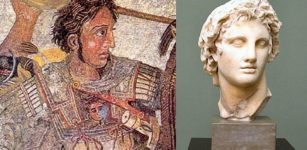 Why Didn’t Alexander The Great’s Body Show Signs Of Decomposition For Several Days? A Never-Before Suggested Explanation – From Scientists
Archaeology | Jan 24, 2019
Why Didn’t Alexander The Great’s Body Show Signs Of Decomposition For Several Days? A Never-Before Suggested Explanation – From Scientists
Archaeology | Jan 24, 2019 -
 Carbon-12 – A Critical Gateway To The Birth Of Life Is Produced In Stars – Did Life Come From Cosmos?
Human Beginnings | May 23, 2022
Carbon-12 – A Critical Gateway To The Birth Of Life Is Produced In Stars – Did Life Come From Cosmos?
Human Beginnings | May 23, 2022 -
 Mysterious Figurine Of Seated Olmec Woman With Polished Hematite Disk
Artifacts | Sep 12, 2015
Mysterious Figurine Of Seated Olmec Woman With Polished Hematite Disk
Artifacts | Sep 12, 2015 -
 Bacho Kiro Cave: Genomes Of The Earliest Europeans – Sequenced
Archaeology | Apr 8, 2021
Bacho Kiro Cave: Genomes Of The Earliest Europeans – Sequenced
Archaeology | Apr 8, 2021 -
 The Brujo De Chiloé – The Wild Warlocks Of The Chiloé Archipelago
Featured Stories | May 4, 2022
The Brujo De Chiloé – The Wild Warlocks Of The Chiloé Archipelago
Featured Stories | May 4, 2022 -
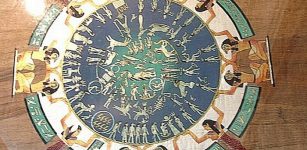 Ancient Papyrus Reveals Millennia Old Astronomical Secret: The ‘Demon Star’ Algol Does Exist
Civilizations | Aug 23, 2015
Ancient Papyrus Reveals Millennia Old Astronomical Secret: The ‘Demon Star’ Algol Does Exist
Civilizations | Aug 23, 2015 -
 Family Looking For Lost Gold Ring Finds Viking Age Artifacts In Their Garden On The Island Of Jomfruland
Archaeology | Sep 30, 2023
Family Looking For Lost Gold Ring Finds Viking Age Artifacts In Their Garden On The Island Of Jomfruland
Archaeology | Sep 30, 2023 -
 Ancient Egyptian Blue Powder Makes Fingerprints Glow And Will Be Used By Crime Scene Investigators
Ancient Technology | Jun 15, 2017
Ancient Egyptian Blue Powder Makes Fingerprints Glow And Will Be Used By Crime Scene Investigators
Ancient Technology | Jun 15, 2017 -
 Is There An Ancient Secret Connection Between The Statue Of Liberty And The Anunnaki Goddess Inanna?
Featured Stories | Sep 28, 2018
Is There An Ancient Secret Connection Between The Statue Of Liberty And The Anunnaki Goddess Inanna?
Featured Stories | Sep 28, 2018 -
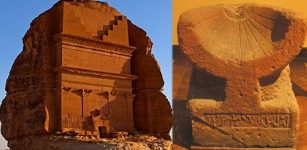 Mada’in Saleh: Spectacular Rock-Cut Tombs And Monuments Reflect Great Skills Of Nabataean Builders
Featured Stories | Aug 18, 2020
Mada’in Saleh: Spectacular Rock-Cut Tombs And Monuments Reflect Great Skills Of Nabataean Builders
Featured Stories | Aug 18, 2020 -
 Unexplained Phenomenon In Ancient Ireland – When Legends, Science And Real Events Collide
Ancient Mysteries | Apr 19, 2018
Unexplained Phenomenon In Ancient Ireland – When Legends, Science And Real Events Collide
Ancient Mysteries | Apr 19, 2018 -
 Stunning Reconstruction Of Caterthun Iron Age Forts In The Grampian Mountains, Scotland
Civilizations | Nov 17, 2016
Stunning Reconstruction Of Caterthun Iron Age Forts In The Grampian Mountains, Scotland
Civilizations | Nov 17, 2016 -
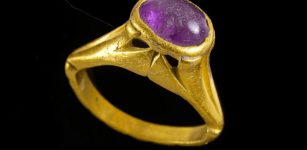 Ancient Greek Amethyst Ring To Ward Off A Hangover Discovered At The World’s Largest Byzantine Wine Factory In Yavne, Israel
Archaeology | Nov 12, 2021
Ancient Greek Amethyst Ring To Ward Off A Hangover Discovered At The World’s Largest Byzantine Wine Factory In Yavne, Israel
Archaeology | Nov 12, 2021 -
 LIDAR Discovers Huge Abandoned Zapotec City With Temples, And Ball Courts In Oaxaca, Mexico
Archaeology | Jan 30, 2025
LIDAR Discovers Huge Abandoned Zapotec City With Temples, And Ball Courts In Oaxaca, Mexico
Archaeology | Jan 30, 2025 -
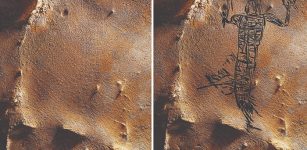 3D Scans Reveal Thousands Of Never-Before-Seen Ancient American Rock Art Images In Alabama Cave
News | May 5, 2022
3D Scans Reveal Thousands Of Never-Before-Seen Ancient American Rock Art Images In Alabama Cave
News | May 5, 2022 -
 Legend Of Kitezh – Ancient Underwater City And Its Doomsday Prophecy
Featured Stories | Mar 14, 2017
Legend Of Kitezh – Ancient Underwater City And Its Doomsday Prophecy
Featured Stories | Mar 14, 2017 -
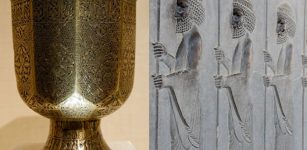 Cup Of Jamshid – Holy Grail Of Ancient Persia Offered Immortality And Visions Of The Future
Featured Stories | Jan 16, 2019
Cup Of Jamshid – Holy Grail Of Ancient Persia Offered Immortality And Visions Of The Future
Featured Stories | Jan 16, 2019 -
 Mystery Of The 30,000-Year-Old Venus Of Willendorf Solved?
Archaeology | Feb 28, 2022
Mystery Of The 30,000-Year-Old Venus Of Willendorf Solved?
Archaeology | Feb 28, 2022 -
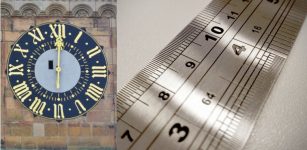 Why Did We Abandon Roman Numerals?
Ancient History Facts | Apr 25, 2019
Why Did We Abandon Roman Numerals?
Ancient History Facts | Apr 25, 2019

